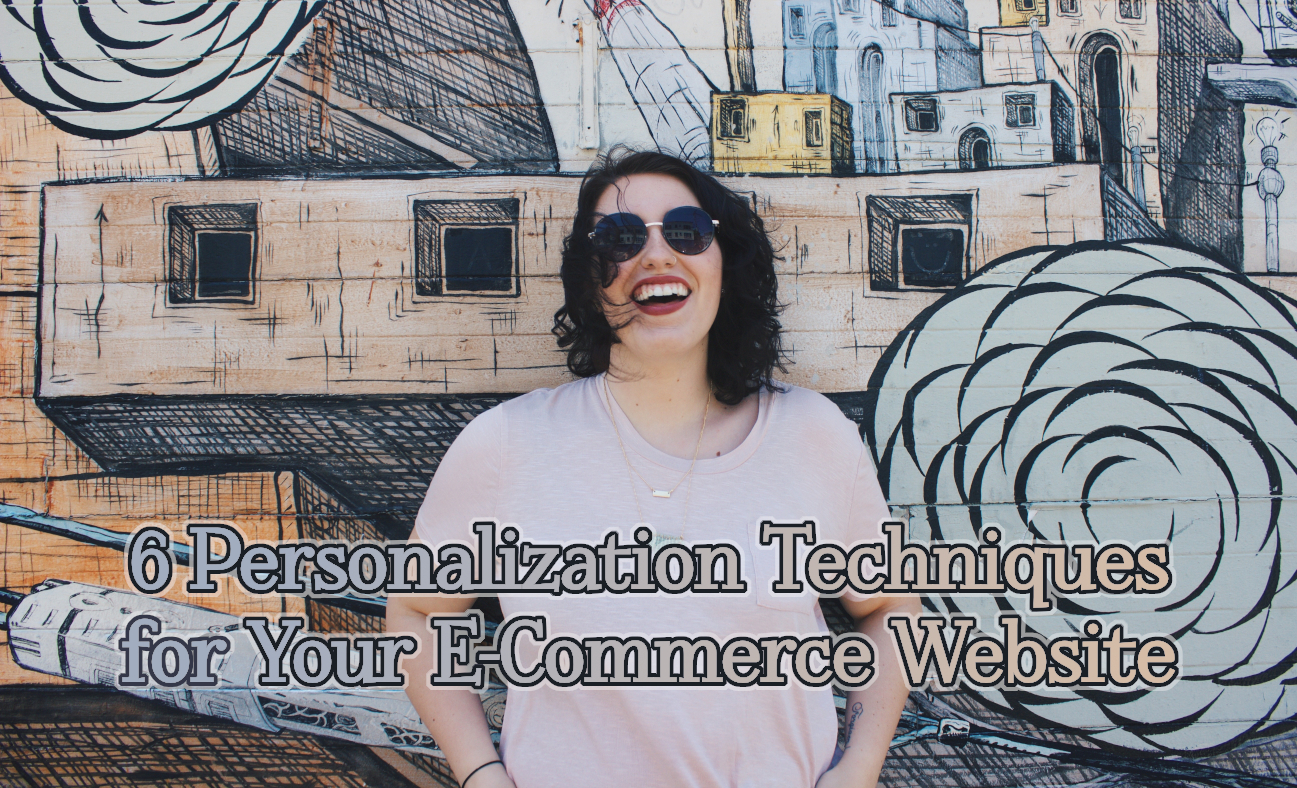Introduction
Personalization in marketing refers to tailoring a person’s shopping experience to their needs. You do this by taking note of who they are (e.g., age, location, gender) and what they do in your online store. Then, adapt to their preferences by changing the way your e-commerce website design looks or changing the way you promote your brand.
Now, it may seem daunting to do, but it’s actually quite easy! There are plenty of small ways you can make a personalized experience for your customer.
Drive Traffic E-Commerce is here to tell you our top six tips to help personalize your online brand.
1. Homepage
The first time you visit anybody’s website, they’ll probably tell you about their cookie policy.
Cookies are little tidbits of information about a customer that your e-commerce website can save. This makes it easier for you to keep them signed into your account, remember their billing details, remember your site preferences, and of course, personalize their user experience. You can use cookies to prepare for the next time they visit.
For example, a user just logged onto your online bakery for the first time. You notice they clicked on a store branch close to them and also looked through your chocolate cakes. So, for their second visit, personalize their homepage by immediately taking them to that branch’s website and emphasizing your chocolate cake selection. It’s a subtle change, but it can do wonders for them.
2. Recently Viewed Items
When someone browses through your e-commerce website, chances are they’re mostly window shopping. They might want to look at what other items you have, aren’t too sure about the price of the item, aren’t too sure if they need it, etc. Whatever the case, you want to make it easier for them to find those items again and give them a chance to buy them this time.
Pair this with a call to action or an offer. Saying things like, “Are you still interested in buying this?” or “50 people have added this item to their cart!” can nudge them into buying.
You can also use recently viewed items to recommend similar products.
3. Product Selection
You don’t have to do all the work in personalization. Your customers can tell you what they want to see too! Add in some handy features like surveys, quizzes, and search engines to gather data on what they’re looking for and show them all available options. There are two ways you can do this.
The first is by helping narrow their search results. If they’re only looking for something of a certain size, under a certain budget, and for a certain audience, then help them out by only showing items under those categories.
The second way is personalizing the product itself. By knowing what they’re hoping to achieve, you can custom-make the perfect product for them. This will take some resources on your end, of course, but you’re almost guaranteed a product your customer is going to love.
4. Location
If your store’s got branches in multiple countries, then you’ll want to have location-based personalization too. Otherwise, there are plenty of ways it can deter your customers from buying from you.
A common example of this would be using the imperial system for your US-based customers and the metric system for everybody else. Nobody wants to switch tabs back and forth figuring out conversions. The same applies to dress sizes, shoe sizes, and currency too.
Another example would be availability—some countries have products that others don’t, so don’t offer products that customers can’t have. McDonald’s Japan, for instance, has a Roasted Soy Sauce Double Thick Beef Burger that’d be seen nowhere near the United States.
5. Email Marketing
Email marketing may get kind of blah, but it’s still a pretty easy and effective way to make people remember you. As an e-commerce website owner, you want to send emails and newsletters with a personalized touch.
For example, you can add the customer’s name to the title and body of the email. This makes you stand out from a sea of generic emails in their inbox. You could also send them coupons and discounts on occasions like birthdays, Christmases, and more. Not only do you remember them during their special day, but you also offer them a sweet deal!
6. Campaigns
On a related note, while email marketing might be tried and tested, not everybody is going to want you in their inbox. And they’re most definitely not going to appreciate you badgering them to sign up for your newsletter. So, just find other ways of grabbing their attention like showing off new releases or flash sales instead of the sign-up form.
However, you still want to make signing up for your newsletter available for them. Put a link to the side or bottom—this makes it easily visible without hampering their shopping experience.
Conclusion
And there you have it, our top six tips to get you started on personalization. While these may seem simple, they can do a whole lot to make your customers feel extra special. Try them out and you’ll be sure to see boosts in your sales and more organic traffic in no time (with proper SEO and marketing campaigns, of course)!
If you need help establishing your online store, we provide e-commerce web development services that can help you out. Please visit our website for more information.
